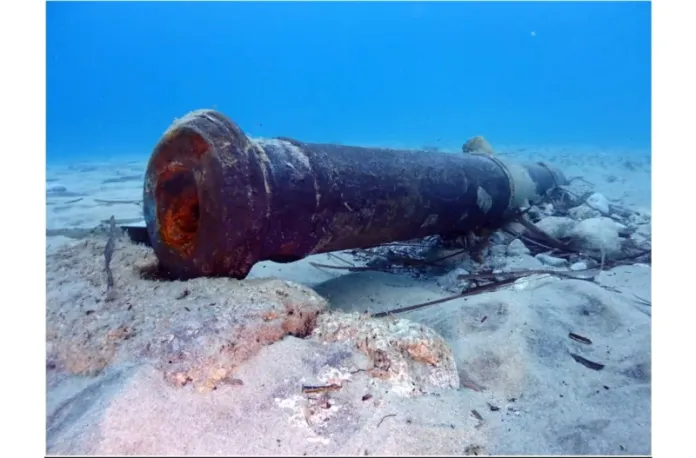Impressive finds from ship estimated to have been 25 meters long – Two cannons and a caryophyll found that appear to have been used during the Revolution
A shipwreck believed to be connected to the Greek Revolution of 1821 was hidden for years under the water in the sea of Fourka, in Halkidiki, 80 meters from the coast and at a depth of four meters.
The shipwreck was discovered by chance, in the summer of 2020, by members of the echelon of the then newly established office of the Tax Office of Maritime Antiquities in northern Greece, during an underwater autopsy they performed, with the aim of providing an opinion on a study for the construction of submerged breakwaters and filling the coast with sand.
A new underwater autopsy on the wreck revealed the ship’s wooden hull – estimated to have been 25 meters long and eight meters wide – as well as two cannons and a cannon which appear to have been used during the Revolution. Of great interest were the two cannons found in good condition, 1.65 and 1.86 meters long respectively.

The cariophili, which exceeds one and a half meters, has decorative elements and its typology is very similar to the rifles and cariophili used in the Greek Revolution by the land fighters.

According to the archaeologists, the research is at an early stage, but the wreck probably belongs to the revolutionary period and dates back to the late 18th and early 19th centuries. It is also possible that the ship itself played a role in the Greek Revolution, specifically the revolt in Halkidiki, spearheaded by Emmanuel Papas, who carried food to bolster the trying revolutionaries.

After all, evidence for the identity of the ship is provided by the findings of the wreck, which include, among others, ropes and sails (on the basis of which it is assumed that the ship was a sailing vessel), clay and metal vessels, a copper pan, a large copper ware, a glass bottle with its cork, fragments of porcelain cups, a wooden basket, a broken sack and a bronze inkpot.

All of this was found alongside portable materials, bricks, concrete blocks, car tires and even a television screen that local residents said ended up there during the floods of the past few decades.
The research and study of the material will continue, while, as estimated, the underwater excavation can highlight the area and its cultural stock and illuminate the not so well known revolution of 1821 in Macedonia from an archaeological point of view.
Shipwreck of 1821 found at the bottom of Fourka, off Halkidiki (photos) | News Bulletin 247









